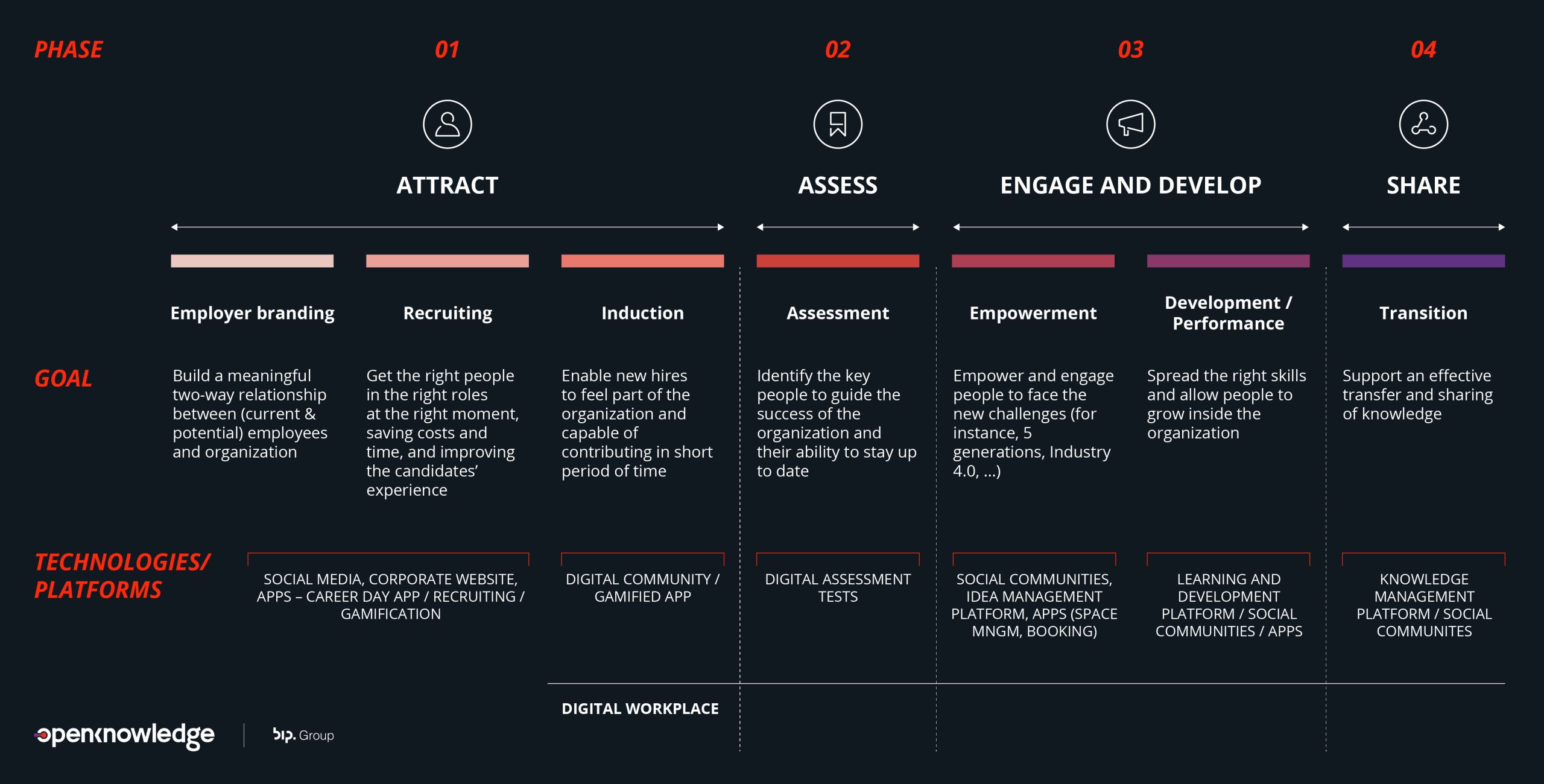AI and Employee Experience: Risks, Opportunities, and Levers
AI is a tool, not an automatic solution to business problems. When adopted with awareness, it can enhance the Employee Experience by making work more personalized, productive, and less frustrating.
However, if implemented without a clear strategy, it can lead to disconnection, distrust, and new forms of alienation.
Generative artificial intelligence is profoundly influencing not only business processes but also the daily experience of employees.
While many organizations focus on technological impacts, chasing the most innovative tools, the real challenge, as always, revolves around people.
Many companies are investing in AI to automate processes, personalize training, and improve employee support. However, without a strategic plan that involves both technology and corporate culture, the risk is creating more difficulties than benefits.
How can we introduce AI without triggering resistance? How do we ensure it improves work life rather than making it colder and impersonal?
AI can be an extraordinary tool for enhancing the Employee Experience, but only if its introduction is accompanied by a well-managed change process.
Where Can AI Make a Difference in Employee Experience?
Employee Experience is a journey that begins long before hiring and continues even after an employee leaves the company. Artificial intelligence can enhance every phase of this cycle, making processes more personalized, inclusive, and efficient while maintaining human value.

The Employee Experience in the OK framework
Source: OpenKnowledge

The Employee Experience in the OK framework
Source: OpenKnowledge
Attraction & Employer Branding
AI can help companies attract the right talent through advanced skill analysis tools and job offer personalization. For example, it can analyze market trends to suggest the most attractive benefits for specific categories of candidates or create personalized content to strengthen the company’s employer brand.
Recruiting
AI algorithms can quickly screen candidates, evaluating not only keywords in resumes but also experiences, soft skills, and growth potential. Advanced video analysis tools can even detect motivation signals and cultural alignment during virtual interviews, helping recruiters make more informed decisions. However, it is crucial to monitor and correct potential biases in AI models to avoid unintentional discrimination.
Onboarding
The first days at a new company can be disorienting. AI can simplify this experience with virtual assistants that answer questions in real-time about company policies, work tools, and team structures. Moreover, AI can personalize onboarding paths, suggesting materials and activities specific to the new hire’s role and skills.
Assessment
Competency and performance evaluations can no longer rely on static and rigid parameters. AI allows for the analysis of real data on employee activities, identifying work patterns and providing personalized feedback. This makes assessments more objective and offers managers detailed insights for talent development.
Engagement
One of the biggest risks in adopting new technologies is increased detachment between employees and the company. AI can become an ally by analyzing corporate sentiment in real-time through intelligent surveys and conversational data analysis. If a team shows signs of stress or declining engagement, the company can intervene before the issue becomes critical.
Learning & Development
AI is revolutionizing the way people learn by enabling adaptive training systems that personalize learning paths based on employees’ profiles. Instead of uniform courses for everyone, employees receive recommendations based on their skills and role challenges, increasing motivation and improving skill acquisition more effectively.
Exit & Sharing
AI can facilitate knowledge transfer, enabling smart offboarding when an employee leaves the company by collecting structured feedback to understand departure reasons and improve the organizational climate. Additionally, AI can help companies maintain connections with former employees, supporting the creation of alumni communities where opportunities, updates, and future collaborations can be shared.
Will AI Truly Improve Work? It’s a Matter of Choices
AI is a tool, not an automatic solution to business problems. When adopted with awareness, it can enhance the Employee Experience by making work more personalized, productive, and less frustrating.
However, if implemented without a clear strategy, it can lead to disconnection, distrust, and new forms of alienation.
To avoid these risks, a joint effort from CHROs and CIOs is needed to combine technological innovation with a focus on people.
Key Steps for Effective AI Adoption in Companies
Define a Shared AI + Employee Experience Strategy
CIOs and CHROs must collaborate to identify the real problems AI can solve to improve employees’ daily work. Envisioning plays a crucial role in cultural change programs, helping to imagine desired future scenarios and build a strategic roadmap.
Engage Employees from the Start
One of the most common mistakes is introducing AI tools without clearly explaining the reasons behind the change. Employees must see AI as an ally, not a control system or threat.
Workshops, leadership discussions, pilot tests with champions, and early adopters are essential to success.
Ensure Proper Training
Change always generates resistance if not understood or if employees are not given the chance to acquire the necessary skills. Dedicated training, boot camps, manuals, and playbooks are essential components of a successful adoption program.
Manage Data and Prevent Bias
If an AI algorithm is trained on biased historical data, it will replicate those biases. CHROs and CIOs must ensure that models are transparent, ethical, and non-discriminatory , especially in HR processes like recruitment and performance evaluation.
Balance AI and Human Interaction
Automating everything is not always the best solution. An AI chatbot can answer questions about company benefits, but an employee facing emotional difficulties needs human interaction. Strategically determining where technology helps and where human intervention is needed is crucial.
Train and Involve Top Management
The first step for effective adoption is training management to interpret and integrate AI into business processes while maintaining control.
Monitor, Analyze, and Iterate
Introducing new technologies, experiences, and work methods always involves experimentation. Defining relevant KPIs, constantly analyzing adoption impacts, and adjusting strategies in real-time is fundamental.
Who will successfully transform work with AI?
How can we ensure AI adoption enhances Employee Experience without negative side effects?
We will discuss this on March 27 at the GenAI Bootcamp, organized in collaboration with WorkDay and Leonardo, featuring a session on “The Human Side of GenAI.” This event is an opportunity to explore how to manage change and build a future of work that is truly sustainable for people.
Author
Ginevra Fidora

 25 March 2025
25 March 2025
